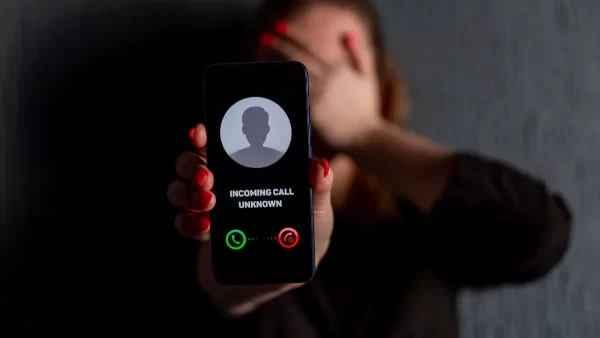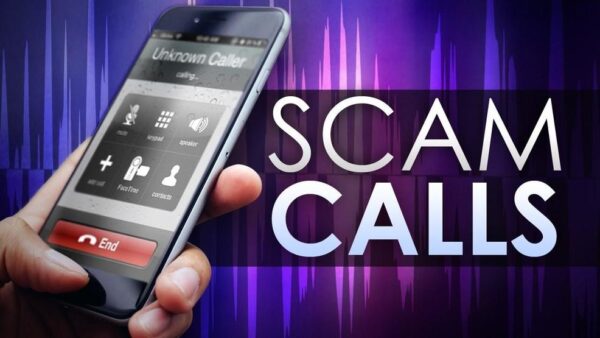Introduction
In today’s digital age, staying vigilant against scams is crucial. One such scam that has gained notoriety is the us9514961195221 scam text. Scammers use various tactics to deceive individuals and steal their personal information or money. In this comprehensive guide, we will walk you through the world of us9514961195221 scam texts, covering common types, protection measures, reporting methods, recent examples, and more. Let’s empower you with the knowledge needed to safeguard your digital life.
Common Types of us9514961195221 Fake SMS Messages
Scammers are constantly evolving their tactics to lure unsuspecting victims. Here are some common types of us9514961195221 fake SMS messages:
- Phishing Texts
Phishing texts aim to trick recipients into revealing sensitive information, such as login credentials or financial details. They often contain links to fake websites that imitate legitimate organizations, enticing users to input their data.
- Prize Scams
These texts claim that the recipient has won a prize or a lottery. To claim the prize, the victim is usually asked to pay a fee or provide personal information. Remember, if it sounds too good to be true, it probably is.
- Financial Scams
Financial scams may involve messages about urgent financial matters, such as unpaid bills or pending transactions. Scammers use fear tactics to prompt victims to make impulsive decisions.
- Fake Alerts
Scammers send fake alerts that may appear to be from banks, government agencies, or other trusted sources. These alerts often contain urgent instructions, pushing recipients to act quickly without thinking.
- Romance Scams
In romance scams, scammers create fake profiles and build emotional connections with their targets. Once trust is established, they may ask for money or gifts, preying on the victim’s emotions.
Protecting Your Personal Information
To protect yourself from us9514961195221 scam texts, follow these essential guidelines:
- Be Skeptical
Maintain a healthy level of skepticism when receiving unsolicited texts. If something seems suspicious or too good to be true, it likely is.
- Verify the Sender
Check the sender’s information. Legitimate organizations will often use their official names and contact details, while scammers may use generic or unfamiliar numbers.
- Don’t Click on Suspicious Links
Avoid clicking on any links in text messages unless you are absolutely certain of their authenticity. Hover over links to preview the URL before clicking.
- Guard Personal Information
Never share personal or financial information through text messages. Legitimate entities will not request such information via SMS.
- Install Security Software
Consider installing reputable mobile security software to help detect and prevent scam texts. These programs can provide an extra layer of protection.
How Scammers Target Individuals
Understanding how scammers target individuals is crucial in preventing falling victim to their schemes. Scammers often employ the following tactics:
- Emotional Manipulation
Scammers may play on your emotions, creating a sense of urgency or fear to cloud your judgment.
- Social Engineering
They may research their targets on social media to craft more convincing and personalized scam messages.
- Impersonation
Scammers may impersonate trusted institutions, making it more difficult to discern their true identity.
- Fake Sense of Trust
They often work hard to gain your trust, which can lead you to lower your guard.
Reporting us9514961195221 Scam Text Messages
If you receive a suspicious us9514961195221 scam text, it’s important to report it promptly. Reporting helps authorities and organizations take action against scammers and protect potential victims.
Here’s how to report a scam text:
- Contact Your Mobile Carrier
Forward the scam text to your mobile carrier by sending it to a designated number. They may provide guidance on reporting the incident.
- Report to Government Agencies
In many countries, you can report scam texts to the relevant government agency, such as the Federal Trade Commission (FTC) in the United States. Visit their website and provide the necessary details.
- Use Dedicated Reporting Services
Numerous organizations and websites offer dedicated platforms for reporting scam texts. Utilize these services to contribute to a larger effort against scammers.
Examples of Recent Text Message Scams
Let’s take a look at some recent us9514961195221 scam text message examples to better understand the tactics scammers employ:
- Fake Package Delivery Notices
Scammers send messages claiming a package is awaiting delivery, with a link to track or reschedule. Clicking the link may lead to malware installation.
- Tax Refund Scams
These messages promise tax refunds and ask for personal or financial details to process the refund. Remember, tax authorities do not contact you via text for such matters.
- COVID-19 Vaccine Scams
Amid the pandemic, scammers have exploited people’s concerns by sending fake vaccine appointment notifications, leading to identity theft or financial loss.
- Lottery Winnings
Receiving a text that you’ve won a lottery you never entered is a red flag. These texts often ask for fees or personal information to claim the prize.
- Charity Scams
Scammers prey on people’s generosity by sending texts soliciting donations for fake charities. Always verify the legitimacy of a charity before donating.
Stay Informed: Latest us9514961195221 Scam Text Alerts
Staying informed about the latest us9514961195221 scam text alerts is essential to protect yourself and your loved ones. Follow these tips:
- Subscribe to Alerts
Sign up for scam text alerts from your mobile carrier, government agencies, or trusted cybersecurity firms. These alerts can help you recognize emerging scams.
- Check Official Sources
Visit official websites and social media profiles of government agencies and organizations to stay updated on the latest scams.
- Share Information
Educate your friends and family about us9514961195221 scams and how to recognize them. Sharing information is key to collective protection.
- Stay Informed
Regularly read news and articles about current scam trends and tactics. Being informed is your best defense.
Preventing Financial Loss from Scam Texts
Preventing financial loss from scam texts involves taking proactive steps:
- Enable Two-Factor Authentication (2FA)
2FA adds an extra layer of security to your accounts, making it harder for scammers to gain access.
- Monitor Your Accounts
Regularly check your bank and credit card statements for any unauthorized transactions.
- Educate Yourself
Stay informed about current scams to recognize them quickly and avoid falling victim.
- Verify Requests
Before taking any action based on a text message, verify the request through official channels, such as contacting the organization directly.
- Report Scam Texts
By reporting scam texts, you not only protect yourself but also help prevent others from becoming victims.
Legal Actions Against Scammers
While prevention is crucial, it’s also important to understand the legal actions taken against scammers. Law enforcement agencies work tirelessly to bring scammers to justice.
- Investigations
Government agencies, such as the FTC, conduct investigations to identify and track down scammers.
- Prosecutions
Once scammers are apprehended, they may face criminal charges, leading to prosecutions and penalties.
- Asset Seizures
In cases where scammers have profited from their activities, authorities may seize their assets to compensate victims.
- Public Awareness
Legal actions also include raising public awareness about scams to prevent future victimization.
Conclusion: Safeguard Your Digital Life from Fake Text Message Scams
In a world where technology connects us, scammers attempt to exploit this connectivity for their gain. Recognizing and protecting yourself from us9514961195221 scam texts is essential. By staying informed, verifying messages, and reporting scams, you can play a crucial role in stopping scammers in their tracks. Safeguard your digital life, and empower others to do the same. Together, we can create a safer digital environment for everyone.
Frequently Asked Questions (FAQs)
- How can I recognize a us9514961195221 scam text?
To recognize a us9514961195221 scam text, be skeptical of unsolicited messages, verify the sender, and avoid clicking on suspicious links. If it seems too good to be true, it probably is.
- What should I do if I receive a suspicious text message?
If you receive a suspicious text, report it to your mobile carrier, relevant government agencies, or dedicated reporting services. Reporting helps authorities take action against scammers.
- Are there recent examples of us9514961195221 scam texts?
Yes, recent examples include fake package delivery notices, tax refund scams, COVID-19 vaccine scams, lottery winnings, and charity scams. Stay informed to recognize these tactics.
- How can I prevent financial loss from scam texts?
Prevent financial loss by enabling two-factor authentication, monitoring your accounts, educating yourself about scams, verifying requests, and reporting scam texts.
- What legal actions are taken against scammers?
Legal actions include investigations, prosecutions, asset seizures, and public awareness campaigns to bring scammers to justice and protect potential victims.





